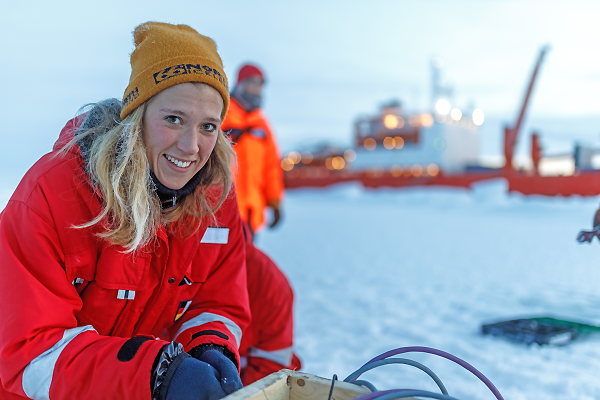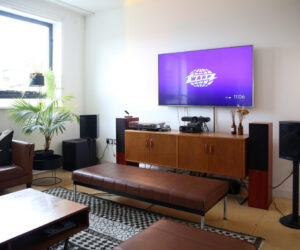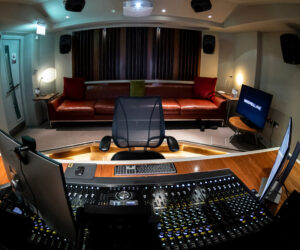The MOSAiC (“Multidisciplinary drifting Observatory for the Study of Arctic Climate”) expedition, an arctic research voyage conducting climate research that concluded in October, saw teacher Friederike Marie Krüger from Germany utilizing Sennheiser microphones for a documentary on the project.
The expedition set sail from Tromsø in Norway on September 20, 2019 and came to an end with the return of the main expedition vessel, the icebreaker Polarstern, to its home port of Bremerhaven, Germany, on October 12, 2020. During the expedition, the Polarstern had docked onto Arctic sea ice and drifted through the Arctic Ocean on a gigantic ice floe. As the ship drifted with the ice, it had contact with a network of measuring stations covering many kilometres.
Krüger, who exchanged the classroom with the research ship for six weeks in order to create teaching materials in addition to the documentary, usually serves as a geography teacher. “I wrote my dissertation at university on the global melting of glaciers,” she notes. “While I was a student and in the years afterwards, I traveled to Iceland many times. I quickly became fascinated by Nordic regions. But it was entirely by chance that I came across an advertisement for the MOSAiC expedition – they were explicitly looking for teachers to accompany the project. Actually, this is quite common practice in research expeditions, as the aim is to open up additional perspectives to a broader public.”

To record her Arctic impressions, Krüger borrowed a compact camera with a CMOS sensor and a built-in zoom lens. She also brought two Sennheiser microphones along with her. She set off on board the Russian research vessel Akademik Federov, which accompanied the Polarstern during the first phase of the expedition and carried supplies of marine diesel and additional measuring equipment. Once the Polarstern had docked on a suitable ice floe, a direct ship-to-ship transfer of people and material took place. After that, the two icebreakers deliberately kept a clear distance apart to prevent damage to the ice floe that had been chosen for the drift and to avoid any negative influence on the measurements.
She quickly learned how to master the previously unfamiliar video and audio equipment: “I told myself that it can’t be all that difficult to record my personal impressions in sound and pictures,” is how the teacher describes her learning-by-doing approach, which turned out in the end to be a positive one. “The video recordings in 4K and full HD resolution came out really well, and the same is true of the sound,” she explains. “At the beginning, I never thought of taking along external microphones and only intended to use the compact camera. But fortunately, just five days before I left, two Sennheiser microphones arrived.”
Most of the recordings were made outside and show the spectacular landscape and the scientists at work. As extremely low temperatures are known to have a negative effect on battery capacity, Krüger had packed additional sets of batteries that were kept as warm as possible while she was filming outside, and she also took care to hold the compact camera close to her body. “The freezing cold still meant that the camera’s autofocus function stopped working after a short time and I had to go inside the warm cabin for a while before I could continue filming,” says Krüger.
The outside temperatures ranged between -20 and -25 degrees Celsius, and on board it wasn’t possible to mount the camera on a stand because of the movement of the ship. “The cold was pretty unpleasant,” she notes. “At such low temperatures, filming is okay for a few minutes, but then your fingers really start to hurt.”
For indoor recordings on board the ship, Krüger mainly used an MKE 440 mounted on the camera’s shoe mount. In this stereo microphone, two capsules in a V-shaped configuration acoustically cover an area corresponding to the recording angle of a 35 mm camera lens to help ensure more homogeneous coverage of the entire area.

For outside recordings, Krüger mostly employed a Sennheiser MKH 416, which was protected from wind noise by an MZW 60-1 basket windshield fitted with an MZH 60-1 hairy cover made from long-haired polyester fleece. The short shotgun microphone was mounted on an MZS 20-1 suspension with a pistol grip that made it easier to control.
The MKH 416 was connected via an XLR cable to a Sennheiser MZA 14 P 48 U battery power supply unit, which also provided it with phantom power. The microphone signal was recorded with automatic level control through the compact camera’s 3.5 mm stereo mini jack input. The recordings were stored on SD cards inside the camera until Krüger was able to save them on her laptop and external hard drives when she got back on board the ship.

So which Arctic sound experience did she think was the most impressive? Krüger describes the haunting sound of ice compression as the ice floe is crushed by sea swell, tides and the wind before being pressed with incredible force against the ship’s hull. “I would compare it to the sound of a creaking steel door in an empty warehouse – but 10 times louder. And right next to your bed!
“The Sennheiser microphones did a fantastic job in spite of the harsh Arctic conditions and I never had any problems with either of the models,” she concludes. “The sound recordings were really successful: the MKE 440 definitely proved itself during the indoor recordings on board, while the MKH 416 showed its strengths as a shotgun microphone during the outside recordings. The basket windshield and protective cover meant that wind noise was never an issue.”
Images and graphics of the MOSAiC expedition can be found with the multimedia assets of the Alfred-Wegener-Institut. The additional pictures accompanying this release can be downloaded here.




















